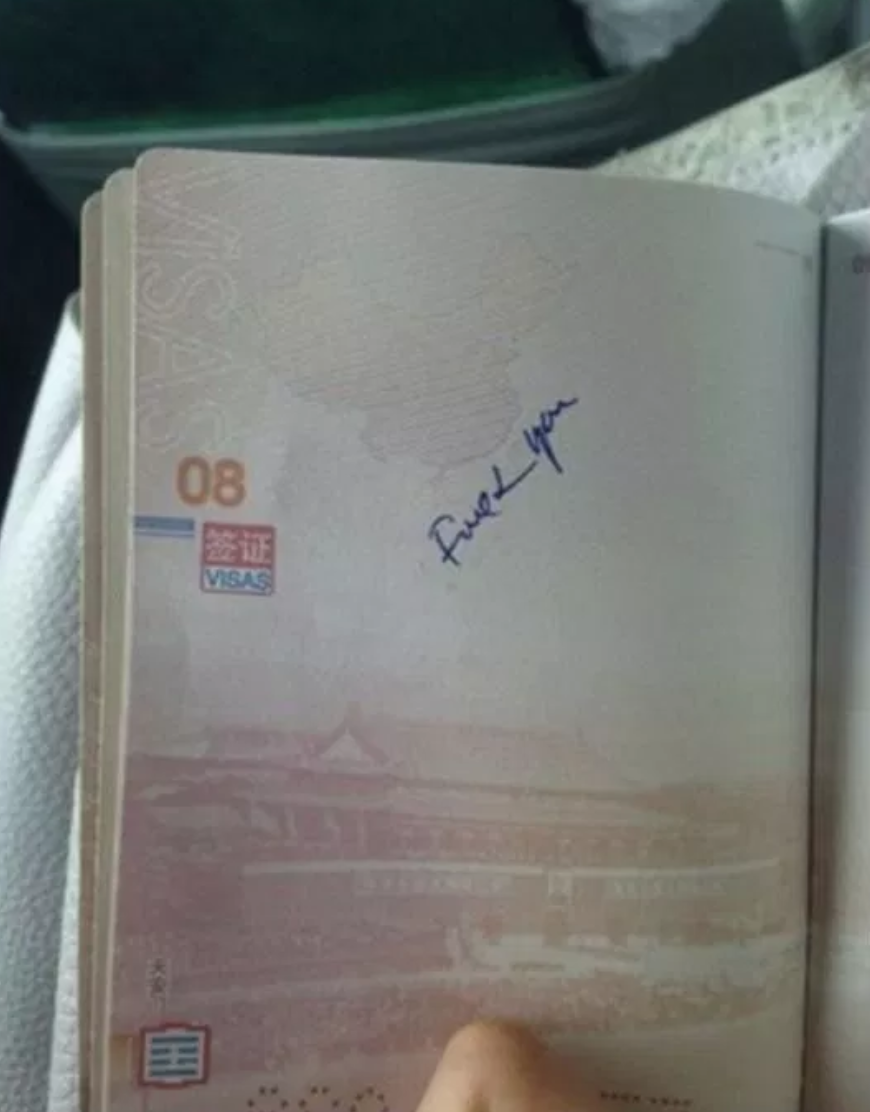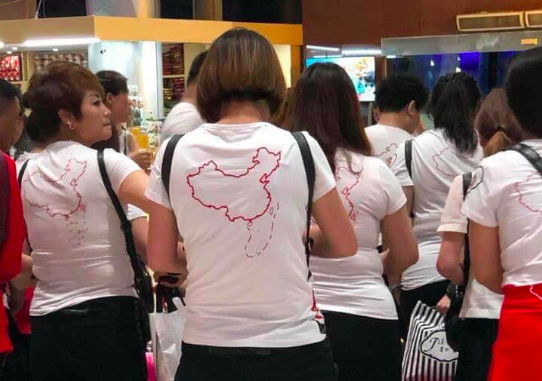A group of Chinese tourists went to Vietnam wearing t-shirts proclaiming the South China Sea belongs to China.
The Chinese tourists were then called out on social media by the Vietnamese.
What t-shirt depicted?
The t-shirts featured a map of China and its U-shaped "nine-dash line" that lays claims to almost the whole of the South China Sea.
The territorial issue is a sensitive one as China's claims overlap with large swathes of Vietnam's Exclusive Economic Zone, and Vietnam's claims to the Paracels and Spratlys as well.
Moreover, Beijing's claims have been deliberately ambiguous.
Chinese tourists told to take their t-shirts off
According to Vietnamese newspaper Labor Daily, the tourists arrived in Cam Ranh airport at Nha Trang, a city on the southern central coast of Vietnam on Sunday night for a five-day stay.
They were then stopped by security at the immigration desk, who ordered them to remove the T-shirts before they could leave the airport.
However, the tourists claimed they had bought the t-shirts at China without knowing about its political significance.
Angry Vietnamese netizens
Pictures of the tourists in the t-shirts then made the rounds on social media, but with the "nine-dash line" crossed out.
Vietnamese netizens were incensed at the perceived blatant show of disrespect to the Vietnamese people by the Chinese tourists.
According to AFP, some even called for the visitors to be deported and banned from visiting Vietnam again.
Here are some comments Vietnamese citizens made regarding the incident:
"Immediately deport them and ban them permanently from coming to Vietnam."
"We must be determined, not allowing anyone passing through our border gates if the passports, t-shirts or anything else with the dash-line maps.”
Not the first time
This is not the first time tensions from the territorial dispute has spilled over to the tourism sector.
In 2016, a border official in Ho Cin Minh City's airport scribbled an unfriendly "f**k you" on two pages of a Chinese passport that featured a map of Beijing's maritime claims.
 Image via Beijing News
Image via Beijing News
The new passports that featured the controversial map were introduced by Chinese authorities in 2012.
Border officials in Da Nang and Phu Quoc island have also reportedly refused to issue visa stamps to Chinese passports with maps of the "nine-dash line".
Tran Cong Truc, a Vietnamese former official who has dealt with China over border issues, said that stamping their passports would "effectively recognise China's claims in the South China Sea".
He said:
"We could not accept the unreasonable claims that have been denied by the arbitration court."
[related_story]
Both Chinese and Vietnamese can get quite nationalistic
Both China and Vietnam are adamant about their territorial claims in the South China Sea.
They are also aggressively reclaiming land in the South China Sea for military use.
The Chinese government is even reinforcing the issue on young children.
Chinese citizens in the state-run education system have been told since grade school that most of the sea belongs to their country. Many were shocked when an international tribunal ruled that China's claims to most of the South China Sea is illegal.
Sporadic protests against China have also been increasingly common in Vietnam.
The Vietnamese government often makes use of sovereignty issues to spur nationalism among the people.
Vietnam's complicated relations with China
Vietnam harbours deep historical resentment against China over its 1,000 years under Chinese rule.
They also have had border differences that can be traced back to the 1950s.
At times, tensions between them have been deadly. A border conflict that began in 1979 simmered well into the 1980s, claiming scores of lives.
More died -- mostly Vietnamese sailors -- when Chinese and Vietnamese vessels clashed in 1988.
In 2014, China challenged Vietnamese claims in the South China Sea by drilling for oil in disputed waters near the Paracel Islands.
In response, Vietnam dispatched 29 ships to chase off the rig.
However, such unilateral Chinese action could not be stopped without resorting to military action -- the same can be said for Chinese actions in the South China Sea.
Complicating their relations even further, Vietnam is reliant on Chinese investments and tourists -- Chinese tourists made up more than 30 percent of all tourists in Vietnam last year.
Perhaps Sino-Vietnamese relations can be summed up what Hung, a Hanoi-based tour operator, says:
"We don't like the Chinese tourists but they bring us profits, so we cannot resist them."
What's up with the "nine-dash line"?
China, Taiwan and several Southeast Asian countries all have competing claims in the South China Sea.
Beijing's territorial claims are by far the largest. Its "nine-dash line" encompasses around 90 percent of the entire South China Sea.
A "11-dash line" was first published by the Republic of China government in a 1947 map.
The People's Republic of China later inherited it when it declared itself the only legitimate representative of China, according to the South China Morning Post.
The "11 dashes" later became "nine dashes" after two "dashes" were removed to bypass the Gulf of Tonkin as a gesture to its communist comrades in North Vietnam.
And recently, a "dash" was added to include Taiwan, Beijing's "core interest", making it a "10-dash line".
Why so triggered?
China has upped its presence in the region by building artificial islands in the sea and installing military facilities on them, allowing them to conduct air and sea patrols.
Beijing says its claim is based in history, going back to records from the Xia and Han dynasties.
However, Vietnam strongly refutes China's territorial claims, saying it has actively ruled over both the Paracels and the Spratlys since the 17th century, and that China never claimed sovereignty over the islands before the 1940s.
The sea also contains rich fishing grounds and large, mostly untapped reserves of oil and natural gas, adding on to its value.
The United States (US) is also extremely concerned about China's rapid island-building and military buildup in the South China Sea, which they say is a challenge to the liberal rules-based order.
They also want the area to remain international waters so that the estimated US$5 trillion (S$6.8 trillion) worth of global trade that passes through the South China Sea annually will remain unaffected.
However, the Chinese have said that they respect freedom of navigation, although neighbouring countries like Japan doubt it.
To resolve the dispute, experts have suggested options such as promoting cooperation by making the area a joint economic development zone from which all claimants could potentially benefit from.
But it is unlikely for any state to willingly give up its sovereignty to any territory easily.
Top image via Ngo Pham/Twitter
If you like what you read, follow us on Facebook, Instagram, Twitter and Telegram to get the latest updates.
